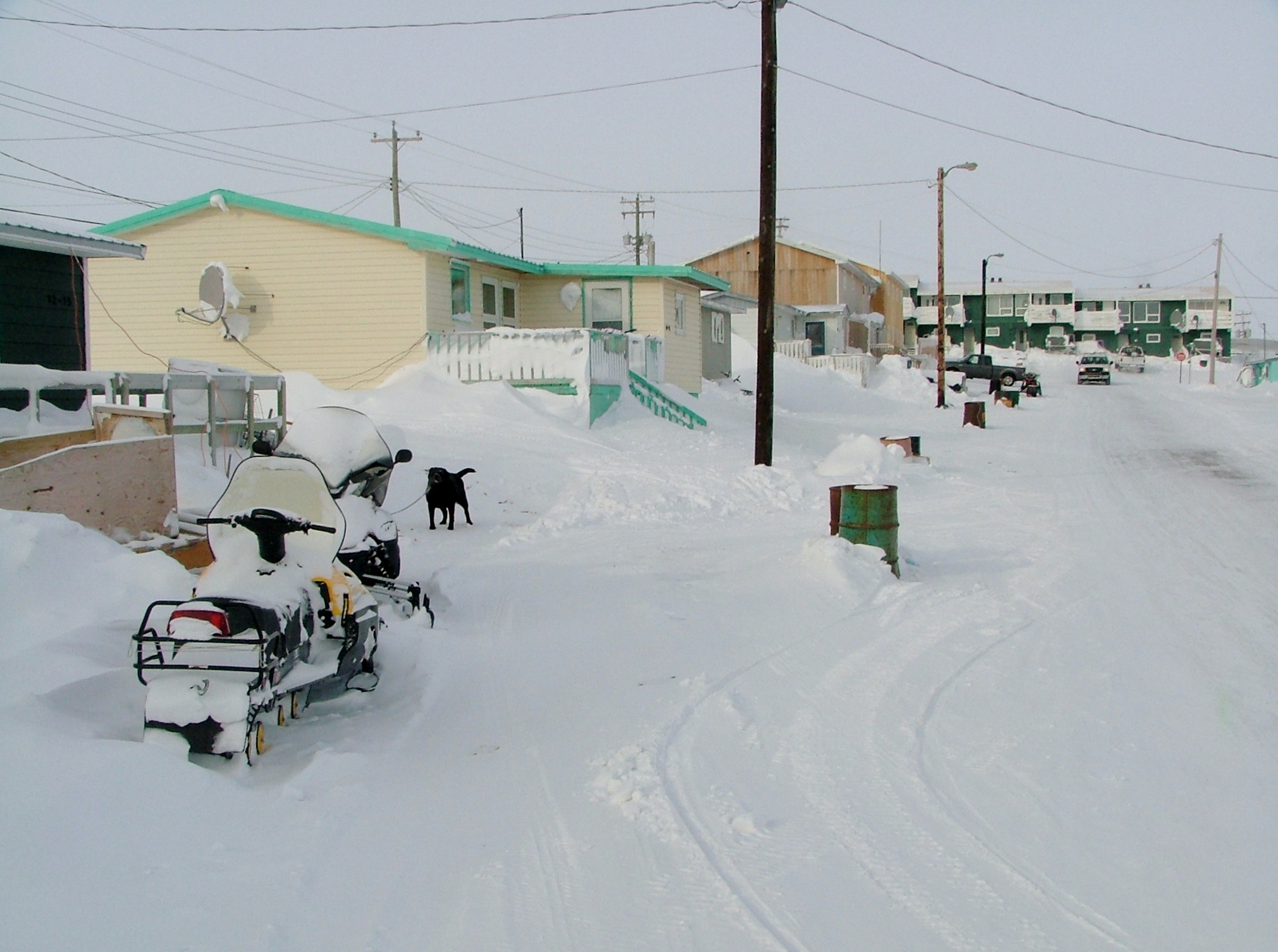
Most of yesterday's course focussed on describing hazardous waste and to attempt to explain the confusing regulatory regime in Nunavut. As southerners, it it quite confusing. Many of the students understood the various organizations that are set up between the Federal Government and the Nunavut Government, so perhaps to them it is less confusing.
At the end of the day, we had an exercise for the students to classify common household hazardous wastes so they would have a better understanding on how it would need to be sorted for shipping. Overall, they did seem to understand which HHW belonged to the 9 classifications. There were some misplacement, but sometimes, it isn't as easy as it sounds. But that is the reason for the exercise.
It was an easy day for me, I was able to have a bit of a look at the waste collection in Rankin Inlet. The Hamlet has one truck - a 20 yd. rear loader that collects residential and commercial wastes throughout the town of 2200 people.
On the residential areas there are 205 L (45 gallon) drums on the street in front of the houses. Usually there is at least two, and sometimes 3 drums. Some are half buried in snow banks along the street. The collectors have to trod to the drums and lift out the contents and toss or throw it to the truck hopper. We heard that sometimes the collectors don't completely clean out the barrels because it is frozen or they don't reach down to the bottom to pick stuff out.
In the morning, I glanced out the classroom window and noticed the rear loader truck backed up to the loading dock of the Co-op store next door. The two swampers were leaning over into two 4 yd dumpster bins and picking out the garbage and tossing it into the truck hopper. It looked like is was picked out piece by piece.
This may certainly appear inefficient and perhaps ergonomically challenging to us southerners. (In this part of the country, Edmontonians are "southerners"). In the north, the communities have to deal with the cards that are dealt to them, so because of limited financial resources, they have to manage things in the best way possible. Empty 45 gallon drums are plentiful and because they don't get recycled, they get used. I did not see any garbage cans in the local stores either. Jobs are scarce, so if it takes longer to collect the waste, they community is at least creating work for a few of the residents. As I learned in a residential waste collection project I was involved in for the Bahamas a few years back - an inefficient collection system creates employment for those that need it.
This morning, Thursday, although it is only a short walk from the hotel to the classroom at the Fire Hall, it was a cold one. Temperature outside today was -37 C. As the day wore on the wind increased, so it was a blustery day of blowing snow. The wind chill was rated at - 60 C. After the class, I wanted to go for a walk. I didn't go very far. Just to the Northern Store and popped in to get warm. Took a very brisk walk back to the hotel facing into the wind. That was a test. Thing is, up here, people will walk all over town, or ride snow mobiles. They do have their parkas hoods up and most have fur around their hoods to keep warm.
One of the things I have truly enjoyed up here is the spirit of the people. As I walk around town i've stopped a few people to get their photograph, mostly because they dress in colourful Inuit clothing. Everyone that I've asked, has eagerly posed with great smiles for me. Today, I saw a woman, Martha, in the Co-op store in the most colourful black and pink "amautik". An amautik is a woman's coat with a large pouch on the back where they carry their small child. Martha was so pleased about having her picture taken with her small daughter, because she also had a picture with her older daughter taken by someone a few years ago and they sent her the photo. I have Martha's address, and I'll send her a framed photo.
